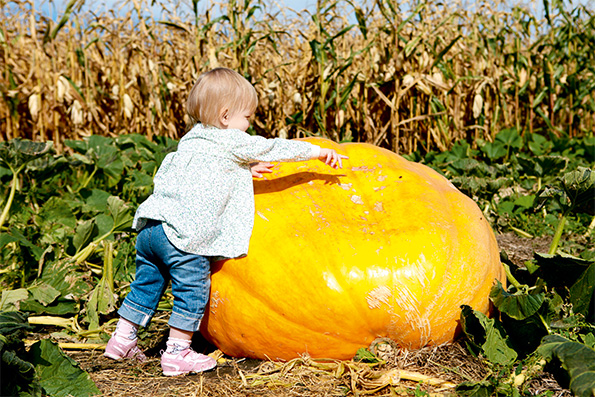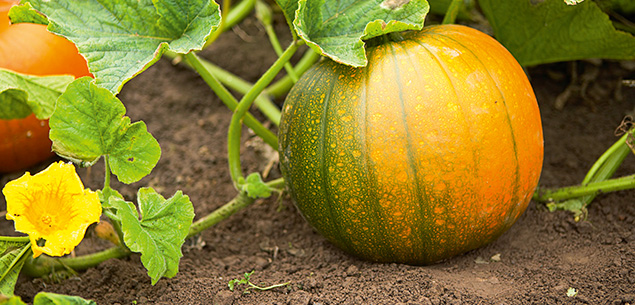Some fruit and vegetables, when produced in excess, are not a bother. Nobody has trouble giving away all those cucumbers, capsicums and Luisa plums. But pumpkins are a different story. Nobody seems to want them until the middle of winter (roasting pumpkins in mid-summer temperatures is nobody’s favourite kitchen task) and I don’t really want them either. I like them, but damaged thumb joints means I need a clamp and a chainsaw to peel them, which rather puts me off.
By now you’re probably wondering why I planted them in the first place. I didn’t. A friend who stayed here while we were away chucked a few seeds around and now we’ve got plants as long as the driveway. I’m praying they’re not the giant variety or we may need a new parking area.
I can’t imagine why they’re doing so well since I’ve never even said so much as “good morning” to them. It supports my theory that successful gardening is sometimes more about good luck than good management.
I have no idea when my pumpkins were planted but apparently the idea is to germinate seeds in late winter or early spring after the frosts are over. Seedlings will appear in about 10 days, and they will be frost tender.
You should plant them in a sunny spot in really rich soil with manure and sheep pellets. I think mine emanated from the compost bin, which may explain a thing or two. If you don’t want to be overtaken by them, you can grow smaller varieties in containers. Water them well while the plant is getting established. If you do want to be overtaken, pinch out the main stems once growth starts to encourage more lateral stems and thus a heavier crop of fruit.
It takes four to six months for the good bit to happen, and I have to admit, it is one of the pleasures of a gardener’s life to lift up a trailing pumpkin plant and find a pumpkin underneath. Somehow, they have so much more character than zucchini and cucumbers.
You’re supposed to harvest them after the first frost, but that won’t work for me because sometimes we don’t have one from one year to the next. And if we do, it’s often unseasonal. So I’ll be doing the tap test – knocking on the pumpkin to see if it sounds hollow. I’ll double check by pressing the skin – if it doesn’t dent, it should be good. Failing all that, when the leaves die away, the pumpkin should be ripe. Anyway, I’ve got so many that if I get it wrong with the first few, it will hardly matter.
Leave the stem on when you harvest them to prevent them rotting. Store them on a shelf in the garden shed with your tools, so that every time you reach for your secateurs, you’ll be reminded of how much fun growing vegetables can be.

A big deal in the vege patch
With the world record standing at more than 900kg, it’s tempting to think you could crack the 1000kg and become famous. If that idea grabs you, here’s how.
Dig your holes a metre deep (yes, a metre!) and about 4m apart. Throw in heaps of manure, plenty of fertiliser and mound up your beds.
Sow seeds or transplant out after Labour Weekend if you want to stick with tradition.
Water to encourage deep rooting and vigorous growth, and during summer, soak well every day. Pumpkins can put on up to 5kg a day (me too, sadly) if watered well.
When the plants start to run, bury the vine with only the leaf and half the leaf stalk showing. This, evidently, will encourage the plant to make more roots and thus take up more nutrients.
Here’s the sad part – when the fruit start to set, sacrifice the tiddlers and just keep the single best fruit on each vine.
While your prize winner is still small, gently rest it on a thick layer of straw, newspaper or cardboard to stop it rotting.
The pumpkin has reached its maximum when the vine starts to die down, usually after 120 days. Cut it off, leaving a 20cm wick. Slide a strong piece of plywood underneath it and call on neighbours to help you get it in the station wagon!




